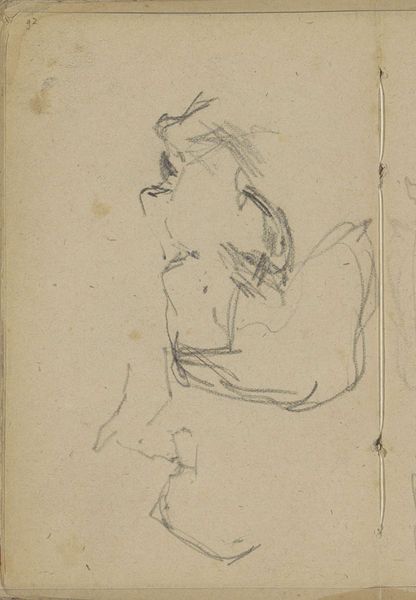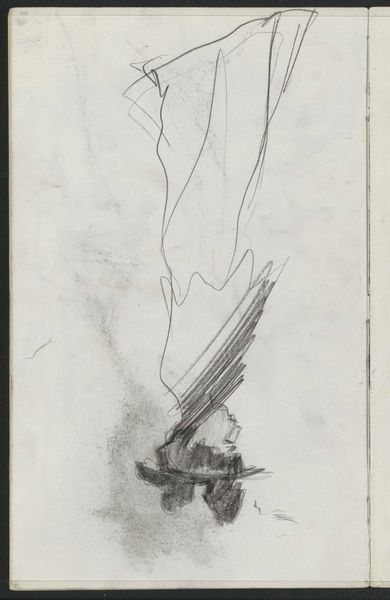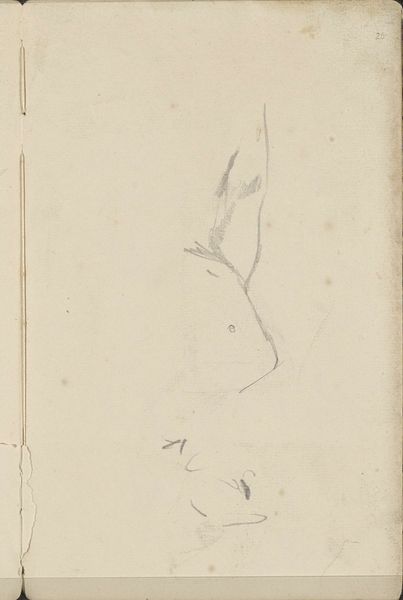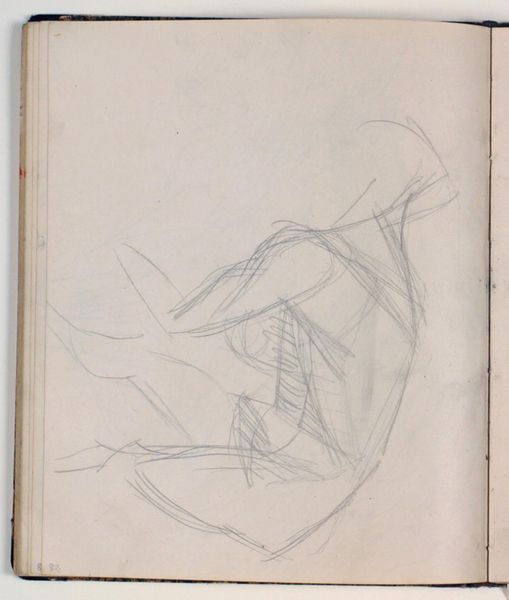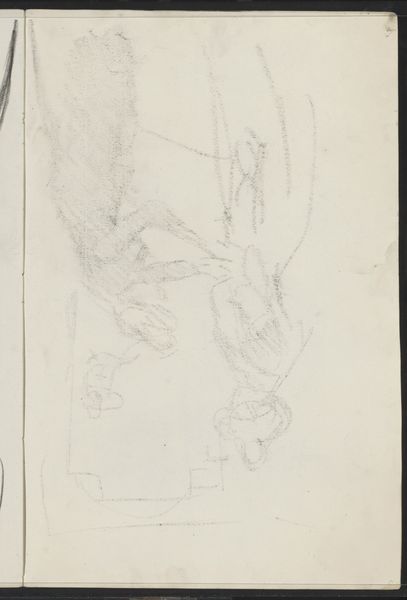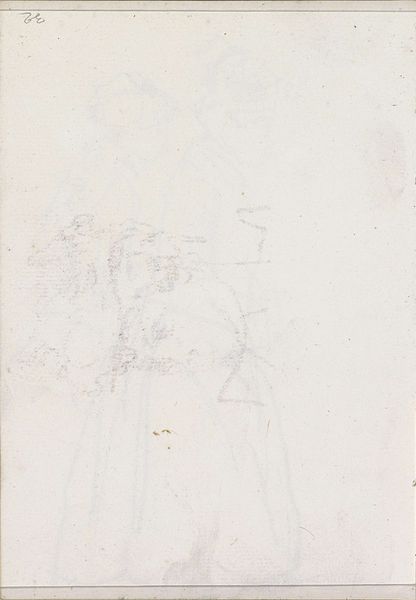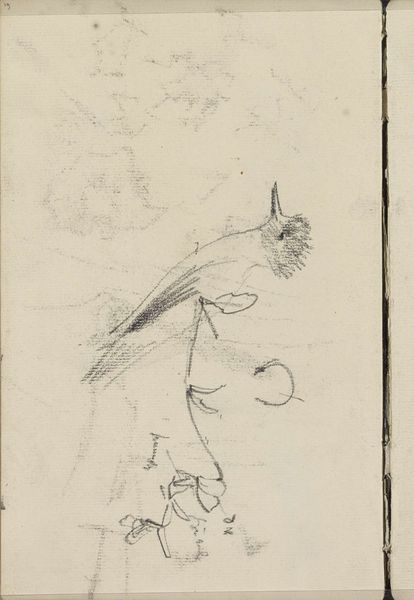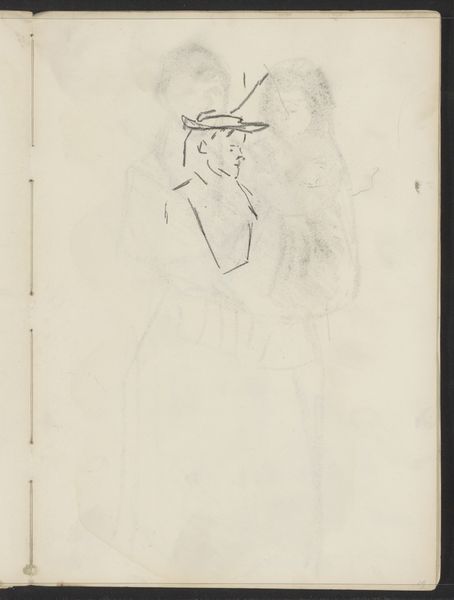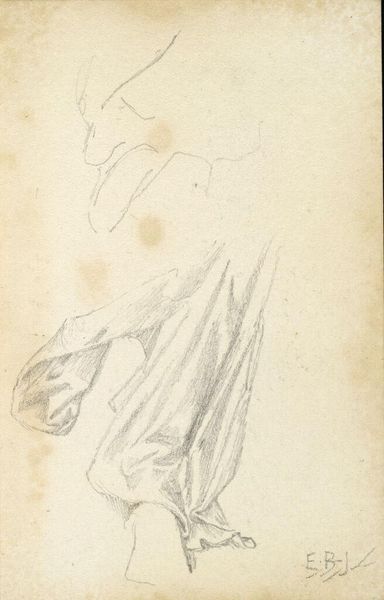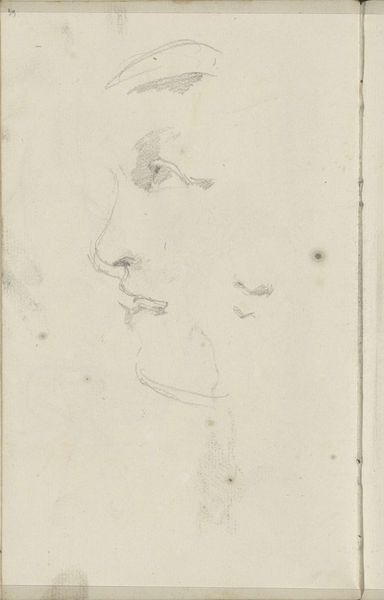
Copyright: Rijks Museum: Open Domain
Editor: Here we have "Abklatsch van de krijttekening op blad 8 recto," a pencil drawing on paper by Isaac Israels, made sometime between 1875 and 1934. There's a delicate, ephemeral quality to the image; it almost feels like a ghost. What social or cultural context should we consider when looking at this portrait? Curator: Given Israels' ties to Impressionism and the drawing's date range, it is crucial to think about the burgeoning middle class and its evolving tastes. Who were the primary consumers of art in this period and how did they value portraiture? Consider how the rise of photography influenced portraiture's purpose. Was it still about memorializing the sitter, or did it become more about capturing a fleeting impression? Editor: That's a great point about photography. It’s almost as though the sketchiness of the drawing is embracing something photography *couldn't* do, a sense of immediacy and movement. Curator: Precisely. The impressionistic style often aimed to capture a sense of modern life. This piece feels less about representing the individual sitter, and more about using them to explore a certain *type* of modern woman and contemporary femininity. Notice how Israels depicts the clothing and accessories, and reflect on their cultural implications: what message do these signals of identity communicate to their intended public? Editor: So it’s less about who she *is* and more about what she *represents* in the cultural landscape. Would you say Israels’ depiction idealizes this woman or critiques her position in society? Curator: That’s the key question. What visual clues point us toward either an admiring portrayal, or perhaps a subtle commentary on the changing role of women and their self-fashioning in this period? Think about the politics of viewing and how the gaze functions here. Is it empathetic, critical, or something else entirely? Editor: I see it now – considering how the image engages with societal shifts gives a deeper understanding than just focusing on the sitter's likeness. Thanks! Curator: Indeed! The beauty of art lies not only in what we see but in what it tells us about the world around it.
Comments
No comments
Be the first to comment and join the conversation on the ultimate creative platform.


